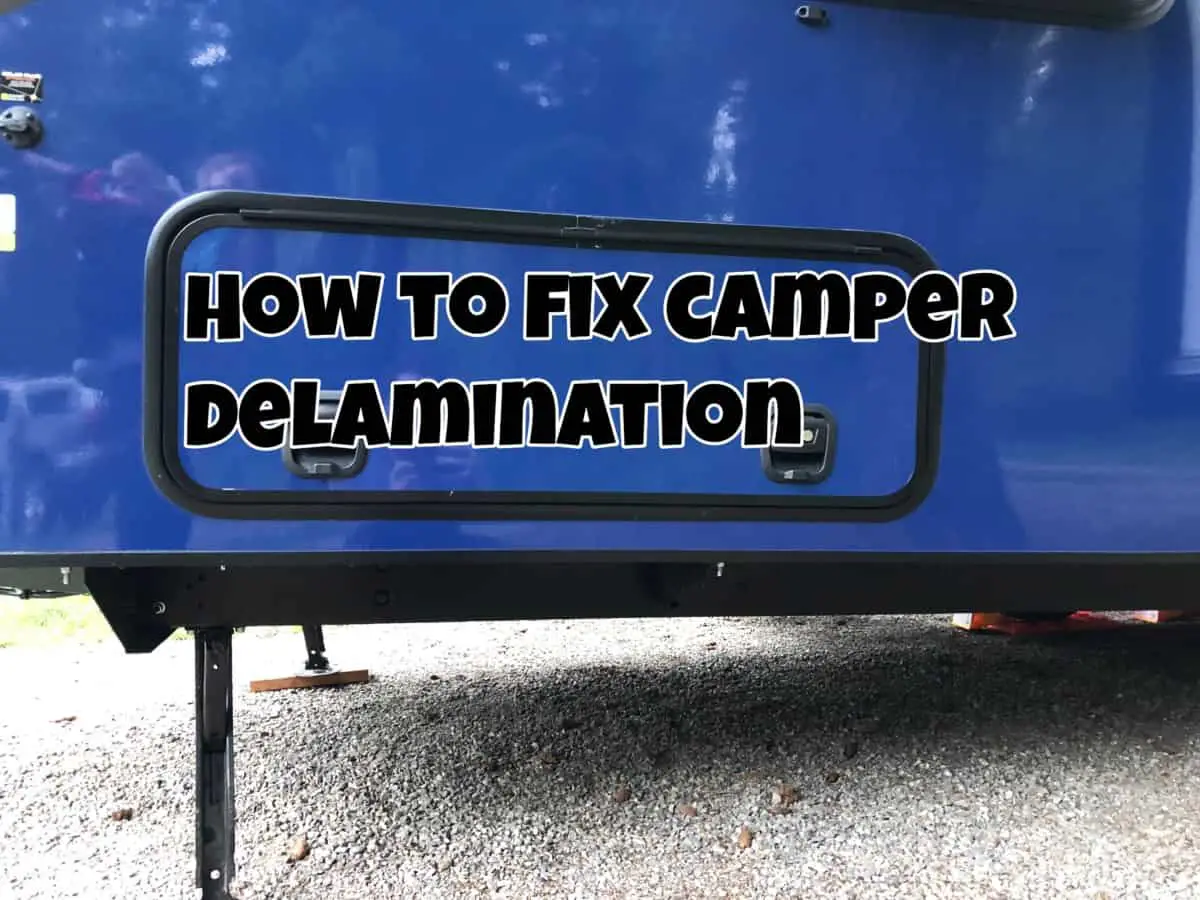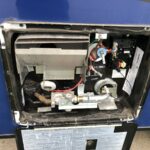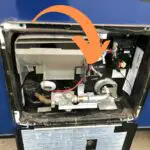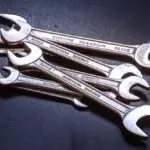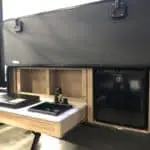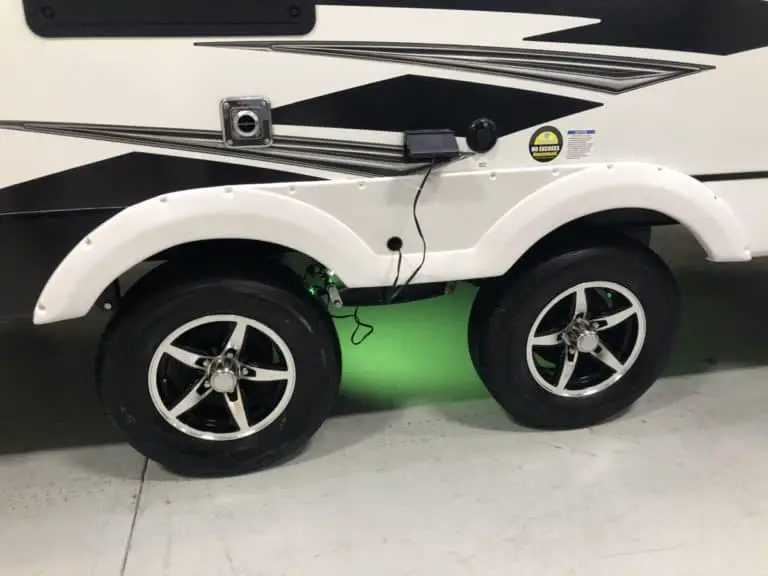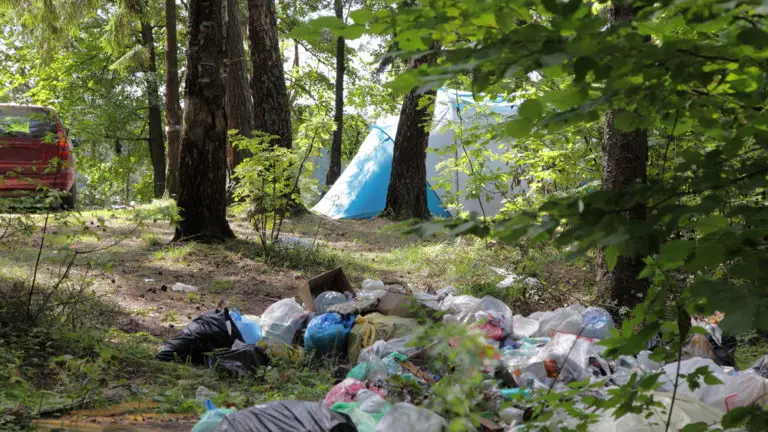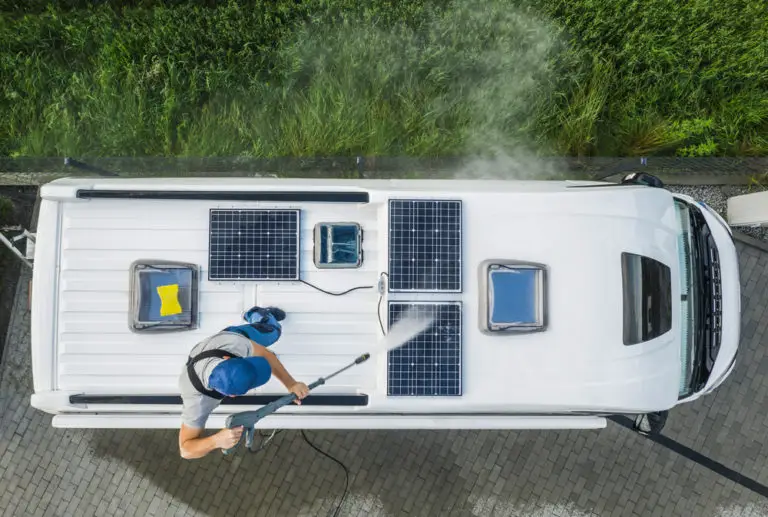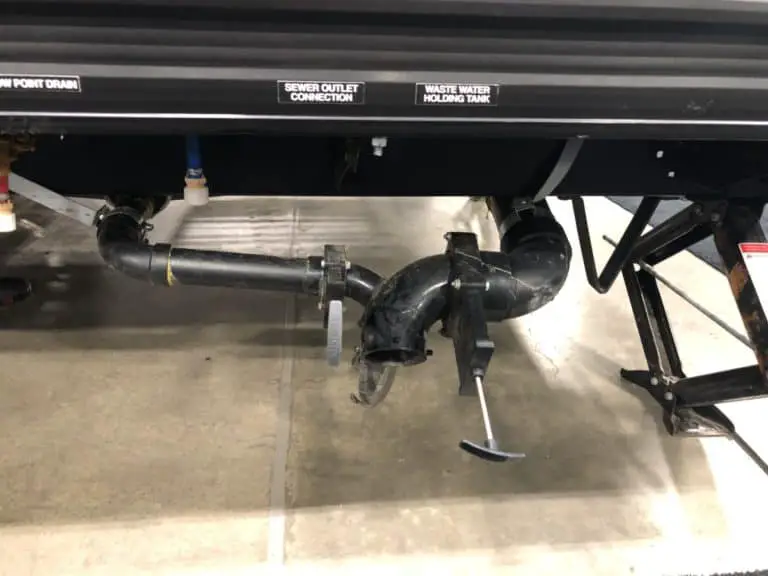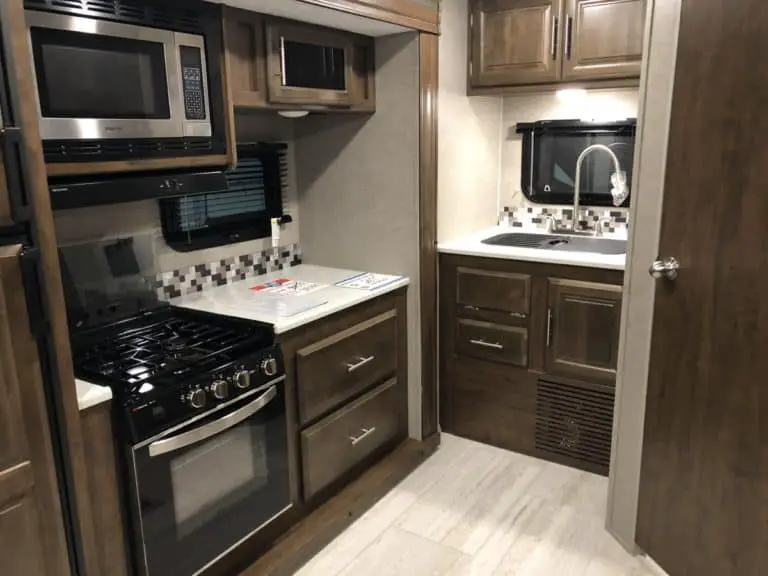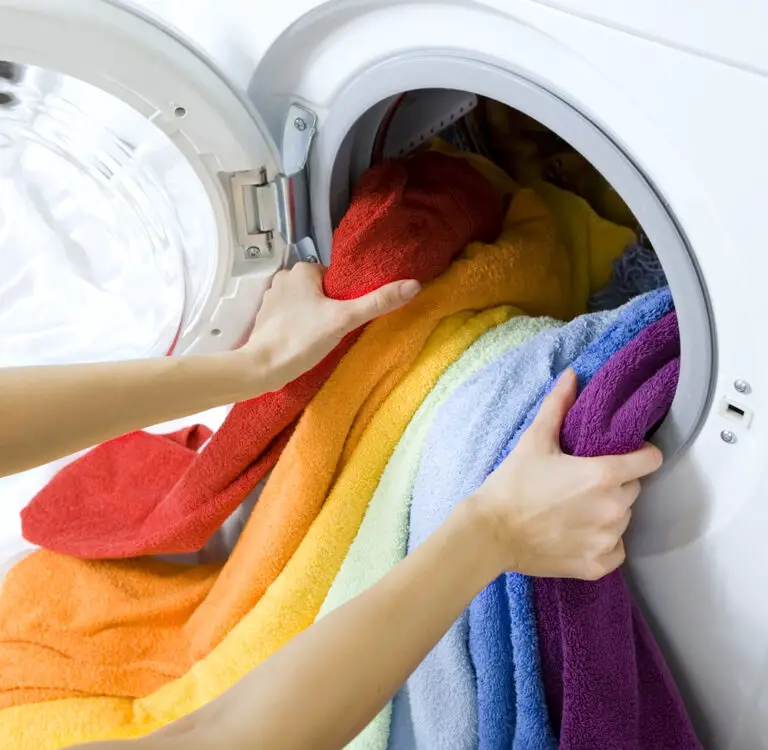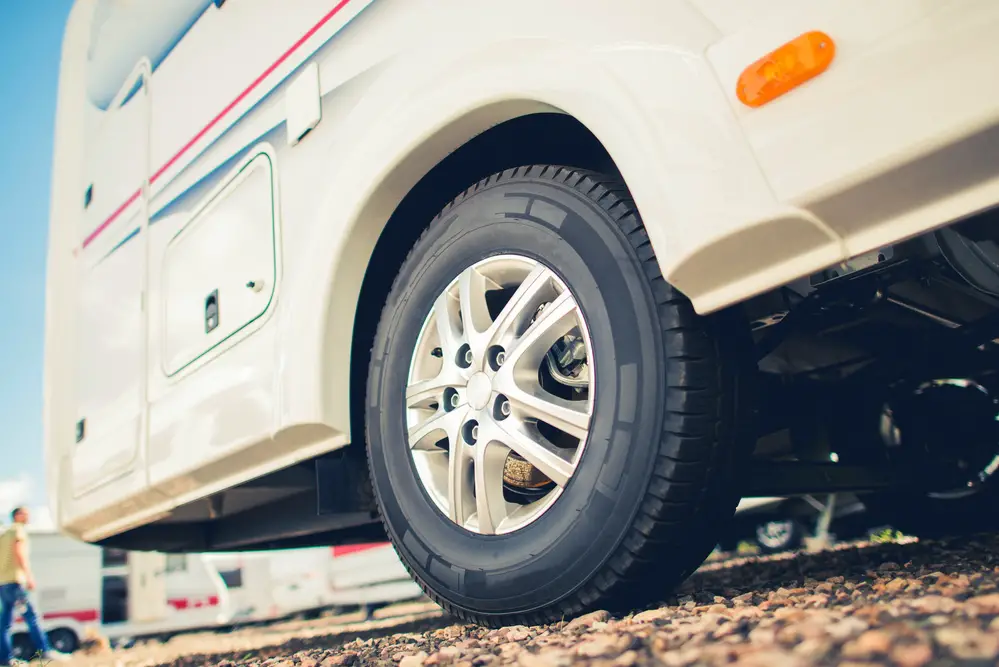10 Steps to Fix Camper Delamination
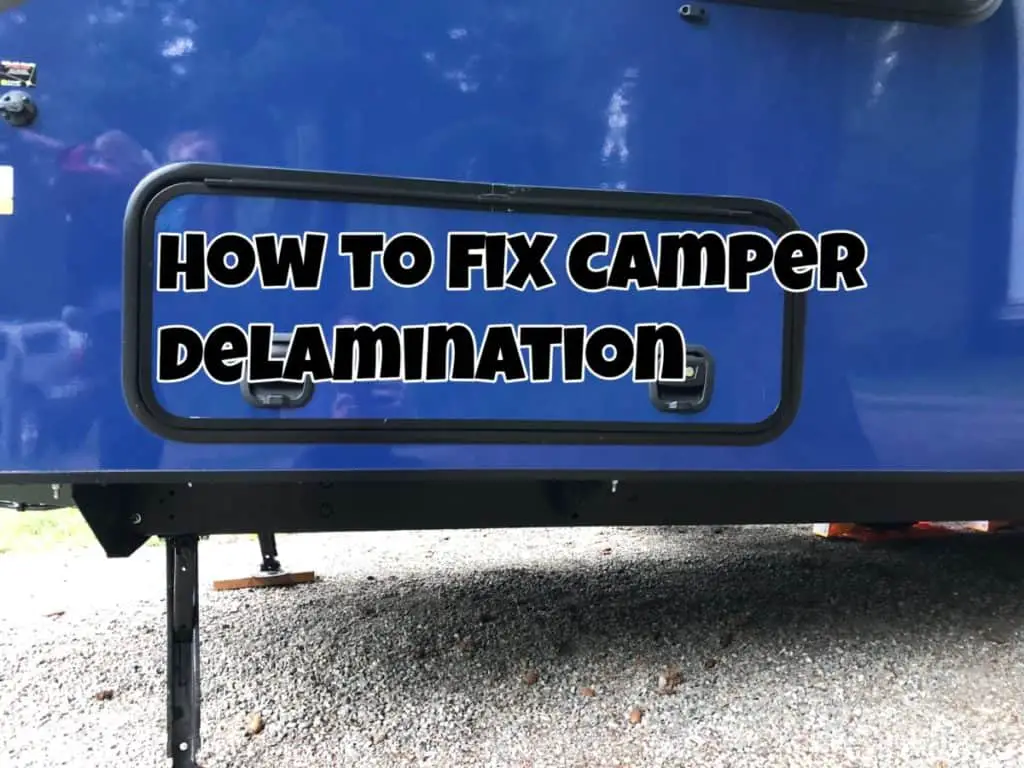
Keeping a travel trailer in good condition requires a lot of upkeep and responsibility that sometimes owners have not always thought about. One of the issues a travel trailer can have that will need to be fixed as soon as possible is being able to fix the fiberglass or outer exterior coating when it begins to pull away from the camper itself. This problem is known as delamination and will require immediate maintenance and fixing when it occurs.
How to fix camper delamination? For a general idea on how to fix your camper delamination at home, you will need epoxy, an injector, clamps as well as other common tools. First, find the delaminated area, inject the epoxy into the affected area, then clamp it shut and wait until it dries. This is a simple process, but the extent of your damage may need to be completed by a professional.
Camper delamination is not something that any travel trailer owner wants to hear that their rig has. It is an expensive problem to solve, and if it is not caught early enough, it could lead to some pretty major structural issues within the walls of the trailer. If the issues are left unattended and not fixed, there is a possibility that the trailer will not be able to be fixed. This is why spotting and caring for this problem when owning a travel trailer is one of the most important maintenance items to conduct on a regular basis.
What is Camper Delamination?
Due to cost-effective building measures, many of the exterior shells of travel trailers are built in layers. Some travel trailers even have as many as 7 to 10 layers depending on the model. Each of these layers are sealed together with a strong and hefty glue. Typically, the exterior layers are constructed out of fiberglass. However, if too small of an amount of glue is used to keep all of these layers together or you have an external factor such as water damage, the pieces will then begin to pull apart which will cause some pretty major issues.
What Camper Delamination Look Like
Conducting regular check-ups for how the exterior of a travel trailer looks will be the best defense in locating and then fixing camper delamination before it causes more widespread and expensive issues. When examining the exterior of a camper, a travel trailer owner will want to look for sections of the exterior walls that do not look flat and smooth. There should not be any waves or bubbles underneath the outer coating. If there are places where the owner is uncertain, running a hand across the surface will also be a good determinate on whether or not it feels as if the surface is lifted rather than flush with the wall.
While some examples of delamination will be obvious to the naked eye, others will not be as easily located. A travel trailer owner can also use their hand or even a common tool to tap around the surface for sounds of delamination. This will usually sound like a hollow spot, indicating that the coating is not adhering to the travel trailer.
Why Camper Delamination Needs to be Fixed Right Away
Once the exterior layers have begun to pull away from each other, this creates just enough space for water to seep in and start wreaking havoc on the shell of the travel trailer. Water does not require much space in order to be able to get inside, so any kind of separation is going to cause some issues. Water usually works its way in through the seams of the trailer, as these are the most compromised areas for leakage.
Once water is inside, it will cause a lot of damage. By the time it is even noticeable to the outside eye of the owner, it is sometimes already too late. While the outside of the trailer may be fiberglass, the inside layers of the travel trailer walls are still made of wood for the most part. As most people know, wood and water do not mix well. Once the water is present inside of the walls, mold will start to grow and the wood will begin to break down and become a soggy mess that will hurt the integrity of the travel trailer walls.
Because of this, it is essential for a travel trailer owner to regularly check on the outside of the rig for any of the common signs for travel delamination. A trailer owner will want to conduct scheduled maintenance on the seams and sealants of the travel as well to ensure that everything is intact to eliminate the possibility of this occurring and leading to greater and more expensive issues later on.
The Cost of Fixing Camper Delamination
Because travel trailer delamination can be easily avoided by the owner conducting regular maintenance on the sealants, most camper insurance policies will not cover a travel trailer delamination. This will then cause the entire cost to be placed on the shoulders of the owner.
If an owner finds themselves in the unfortunate situation of having a camper that has delamination issues but the issues look relatively minor, the owner can purchase a delamination repair kit from a professional company. These at-home repair kits cost anywhere in the range of $200 to $300 and will require some work on the part of the owner.
However, if it seems that the delamination on a trailer is very extensive, the travel trailer or RV will most likely need to be taken into a professional body shop for repairs. Depending on the size of the model and the extent of the delamination, this could cost a travel trailer owner somewhere in the range of $2,000 to $3,000.
Materials Needed to Fix Camper Delamination
Fixing camper delamination is not an easy task. It will require a great deal of work, as well as patience and some know-how in that department. If the owner of a travel trailer decides to go ahead with a do it yourself delamination repair kit, they will a couple of different materials and will need to set aside a good amount of time in order to conduct the repair.
There are professional delamination kits that are available at many travel trailer body shops or retail stores. These kits will have everything you need in them to begin your project and complete it in its entirety. These do have a bit of a sticker shock and can be worked around if necessary with household items or things that can be easily purchased at a home improvement store or travel trailer shop. Do some research on the method that best fits the job and the budget for the project.
If a travel trailer owner decides to purchase materials at a home improvement store, some of the materials that will be needed before taking on this project will include the following:
- Epoxy Resin and Hardener
- Plastic Syringes
- Plastic Tubing
- Mixing Cups
- Clamps
- Wood for Bracing
- Rubber Gloves
- Wedges
- Plastic Sheeting
- Basic Tools
There may be certain things you will need that are not included because they are typically items found around the house. Read through all of the items needed and each step to ensure that these are available before beginning.
Steps for Fixing Camper Delamination
Before starting, It is essential to do lots of research on this specific project so that the owner is aware of all of the work and the process required. There is nothing worse than being in the middle of a difficult project and either not knowing how to do the next step or actually not being able to.
Assemble all of the things that will be needed for the repair before beginning and ensure that you have enough of it. It will be very difficult to stop in the middle of the project to get more items that are needed. After the beginning, it is unlikely that the repair will be able to be undone or repeated.
- Locate the Delamination Area: You will need to locate the area where the delamination has occurred. If it is in one location, you will need to check the entire exterior to ensure that it is not also occurring in another spot. If it is, it can be easier to do it all at once while you have the materials needed.
- Mark the Area – Once you have found the areas that are in need of repair, mark these areas with painter’s tape. You will want to mark the outer edge of where the delamination stops. This will allow you to easily find where you are going to be working and let you see the extent of the project at hand.
- Park the Trailer Properly – You want to make sure that you can park your trailer in a place that allows you to have easy access to the areas that are in need of repair. You want to move it away from any obstructions that could cause you headaches to work around.
- Remove Layers – You will need to be able to get at the delaminated panels which will require you to remove anything that may stand in the way. This could include things such as edging, trim, door and windows. It is possible that there will be multiple layers, so be prepared for this.
- Prepare Epoxy – In a proper sized bowl or bucket, mix the epoxy and the hardener together following the instructions on the can. You will then fill the syringe with the mixture in order to begin the process.
- Inject Expoxy – Once the syringe has been filled, you will place the syringe between the delaminated layers. This will be the most difficult portion of the repair process. Fill the area with the mixture, moving it around as much as possible in order to get the epoxy to cover as much of the surface area as possible. Once the syringe is empty, remove it from the layers. To get between the layers you may get at it from a gap if the delamination is occurring near a window or door or another removable panel such as the outdoor shower. If you cannot get to it, you may need to drill a small hole in order to inject the epoxy.
- Clamp the layers together – As quickly as possible, you will need to press the layers together using the clamps. This will need to happen before the epoxy has any time at all to dry, so have these clamps ready to go before you begin, and make sure you know how you are going to place them.
- Repeat the Process as Needed – You will repeat this process for any area of the travel trailer’s exterior that is showing signs of delamination.
- Let is Stand – You do not want to remove the clamping system prematurely, as this could cause it to not stick together properly and then the entire process will be wasted. Usually, the epoxy needs to be left alone for about 15 to 24 hours. Of course, the longer you can leave it the better.
- Put Everything Back Together – Once the epoxy has had sufficient time to cure, it will be time to put the travel trailer back together. Attach any of the pieces that you removed again, and secure them into place.
This should hopefully help with current delamination and with preventing any future delamination that may occur. If you notice any worrisome spots even after doing this repair process, take in the travel trailer to a professional and let them assess the rig. There may be more damage that lies underneath than meets the eye.
Keeping a travel trailer in pristine condition is important to many owners. Having delamination issues will cause the trailer to not look its best. This is best prevented by regular maintenance of the sealants on the rig itself. However, if delamination does occur, it can typically be fixed either at home or by a professional. Make sure to conduct regular checks on the exterior surface of the travel trailer so that the damage does not get worse than it needs to. This will have you out on the road faster and in a better-looking travel trailer!
Be the first to be notified about FREE tips, hints, coupon codes, and email-exclusive information. All for FREE!

